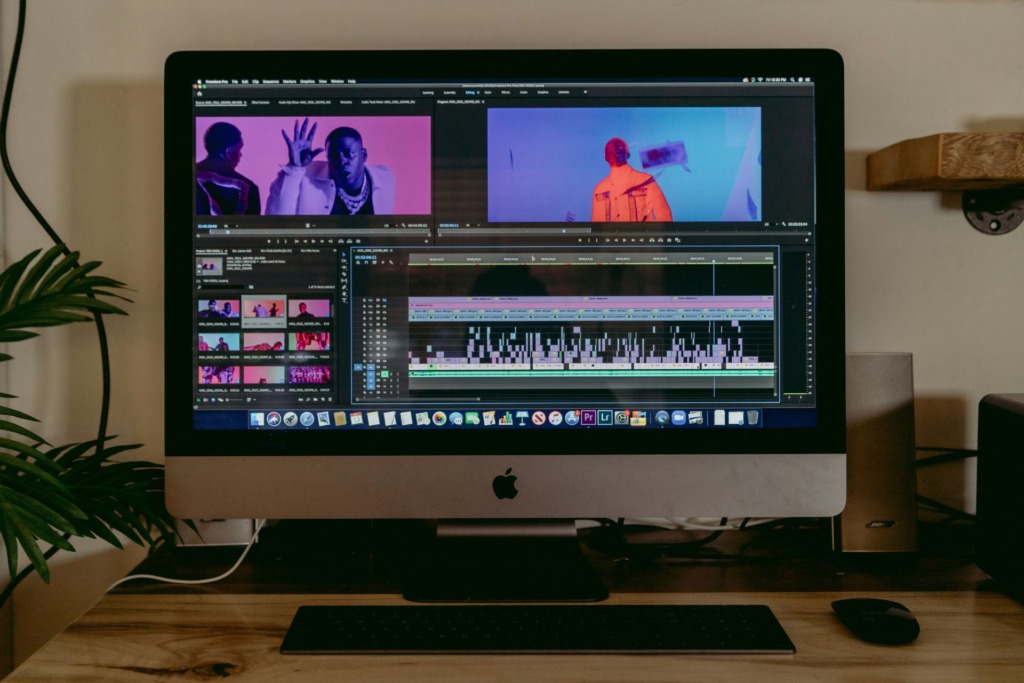Many creatives believe they need to spend a lot on video editing software to get high-quality results. The truth is that plenty of open-source video editors offer pro-level features without the hefty price tag or subscription. In fact, these tools are free and work seamlessly on most operating systems.
However, many professionals have spent years determining which video editing apps work best. After digging into the research, we have found the most popular open source video editors among creatives.
What to Look for in Open Source Video Editing Software

Video has become a large part of business content strategies, with 89% now using it as a marketing tool. Yet, for those on a budget, many business owners try to save using free video editors. To ensure their content is professional, they look for the following key features:
- Non-linear editing (NLE): Allows for flexible editing of multiple clips and tracks without affecting the original files.
- Multi-format support: Compatibility with various video, audio and image file formats saves time and conversion headaches.
- Effects and transitions library: Should have tools for adding fades, cuts and stylized transitions to enhance production value.
- Audio editing tools: Look for waveform editing, noise reduction and audio mixing options to ensure crisp, clear sound.
- Keyframe animation: This feature is essential for fine-tuning motion and transitions.
- Color correction and grading: A necessary element for a polished look and visual consistency.
- Timeline preview and rendering speed: A responsive timeline and efficient rendering engine can maintain creative flow.
- Community support and plugins: Open-source tools perform better when backed by a community. Active forums, documentation and plugins can add valuable features or solve common challenges.
A Brief Overview of Open Source Video Editing Software
Software
| Feature / Tool | Kdenlive | Shotcut | OpenShot | Blender (VSE) |
| Platform Support | Windows, Mac, Linux, BSD | Windows, Mac, Linux | Windows, Mac, Linux | Windows, Mac, Linux |
| User Interface | Intuitive, customizable | Modular, flexible | Simple, beginner-friendly | Advanced, 3D-focused, less intuitive for video editing |
| Key Features | Multi-track editing, effects, transitions, proxy editing | Wide format support, native editing, 4K, filters | Drag-and-drop, unlimited tracks, 3D titles, keyframes | Advanced VFX, 3D animation, compositing, scripting, video editing |
| Export Options | Multiple formats, custom profiles | Multiple formats, direct export | Multiple formats, presets | Multiple formats, advanced rendering options |
| Plugin Support | Yes (MLT framework) | Yes (FFmpeg, filters) | Limited | Extensive (Python scripts, add-ons) |
| Community & Support | Strong, active, detailed docs | Active, good docs, forums | Active, user-friendly docs | Large, global, many tutorials and resources |
| Best For | Professional video editing, marketing, YouTube, training | Versatile editing, marketers, social media | Beginners, small business, quick edits | Designers, animators, advanced users needing VFX or 3D |
| Learning Curve | Moderate | Moderate | Low | High (especially for non-3D users) |
| Notable Limitations | Occasional stability issues on Mac | UI can be overwhelming | Fewer advanced features | Steep learning curve, overkill for simple edits |
Top Open Source Video Editing Tools
Video content is an excellent way for brands to connect with audiences on a human level, whether through how-to tutorials, product explainers or customer testimonials. To achieve this level of connection, businesses will finalize their end product using the following open source video editing software.
1. Kdenlive
Kdenlive is a popular open source video editing software praised for its quality. It is an excellent fit for creatives who want a fully-featured video editor that is easy to use without a huge learning curve. Therefore, this is one tool that ensures it is usable while also remaining powerful. It offers a smooth editing experience that scales with professionals’ needs.
Kdenlive was built on the Media Lovin’ Toolkit (MLT) framework and is powered by FFmpeg, so it offers an excellent set of tools without all technical headaches. Its proxy editing mode ensures smooth playback and editing even on older machines. Meanwhile, it has an active developer community that regularly pushes out updates and new features.
Key features:
- Multi-track timeline with drag-and-drop support
- Wide format compatibility via FFmpeg
- Keyframeable effects and transitions
- Integrated title tool and audio mixer
- Proxy editing for smoother performance with 4K or large files
Pros:
- Strong community support
- Lots of editing features
- Customizable user interface (UI)
Potential downsides:
- It can experience rendering issues if your graphics processing unit (GPU) cannot handle its exports.
2. Shotcut
Shotcut is a go-to for many who need good editing software that works effortlessly across Windows, macOS and Linux. It is ideal for those frustrated by format restrictions or bloated import workflows. With its native timeline editing and drag-and-drop interface, users can dive directly into their projects without dealing with time-consuming import processes.
Shotcut also has various features that rival many premium tools. It offers powerful support for high-resolution footage, hardware acceleration and external device integration. The tool’s UI is also customizable and has wide format support for everything from shorts to large content production.
Key features:
- Native timeline editing without importing files
- Extensive format support for video, audio and images
- Audio filters, mixing and waveform visualization
- Cross-platform compatibility
Pros:
- No importing needed — get started right away
- Includes webcam and audio recording features
- Free with no watermark or ads
Potential downsides:
- Some performance issues where the timeline becomes unresponsive

3. OpenShot
OpenShot was built with ease of use in mind, so it makes a solid choice for those who want to edit videos without having to learn much on first use. It is especially a top option because many users find it useful for performing quick cuts, layering in music or adding titles and transitions.
It is common for new app users to feel lost when they first start using an app. OpenShot provides a refreshing alternative. The interface is clean, drag-and-drop friendly and ideal for simple editing tasks.
Key features:
- Unlimited layers for video, audio and effects
- Real-time previews and transition effects
- Title editor with templates
- 3D animated titles and effects
- Supports most major video and audio formats
Pros:
- Great for beginners
- Clutter-free interface
- Active updates and multilingual support
Potential downsides:
- Limited set of features
4. Blender
Although Blender is primarily for 3D modeling and animation, it includes a surprisingly capable video sequence editor (VSE). Creators who want video editing with motion graphics, animation or VFX can find it in one place with Blender. While it may not be as flashy as some editors, it offers several features that many professional animators and game designers use. Essentially, this tool acts as an all-in-one solution.
Key features:
- 32 slots for adding video, images, audio, masks and effects
- Live preview, luma waveform, chroma vectorscope and histogram displays
- Speed control, transitions, keyframe and filters.
- Audio mixing and scrubbing
Pros:
- Quality basic edits
- Receives frequent updates
- Great for projects with 3D integration
Potential downsides:
- Lacks some conveniences like templates and drag-and-drop simplicity
Choosing the Right Open Source Editing Tool for Creative Workflows
The right open source video editing platform will depend on the user’s goals and needs. Many of the tools in this list are sufficient for most projects, while some offer a path to the most professional results. Start by choosing the most appealing and taking it for a test-drive. While some may require a slight learning curve, the good news is that all are free, so there are no commitments.
About The Author
Cooper Adwin is the Assistant Editor of Designerly Magazine. With several years of experience as a social media manager for a design company, Cooper particularly enjoys focusing on social and design news and topics that help brands create a seamless social media presence. Outside of Designerly, you can find Cooper playing D&D with friends or curled up with his cat and a good book.


